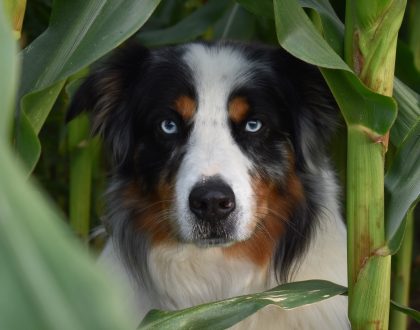Don’t be bothered by by-products

Many websites and other resources about feeding pets advise that you should avoid foods that contain by-products, but the truth is that by-products can be healthy, tasty additions to pet foods.
By-products (mainly organ meats and entrails) often provide more nutrients than muscle meats on a per-weight basis and are important components (and even delicacies) of human diets in other countries. One only need to travel abroad and visit a meat market to see that many of the foods that we are squeamish about feeding to our pets are eaten with gusto by people in other countries. The term “by-product” comes from the fact that they are the leftovers from animal carcasses once the desirable (for Americans) muscle meat has been removed, not because these parts of the animal are inferior in quality, safety, or nutrition.
Interestingly enough, a number of companies use organ meats and other ingredients that fit within the definitions of by-products in their foods, but to avoid the stigma of “by-product” list them as liver, heart, kidney, plasma, etc. Some of these companies even then advertise that they do not contain by-product. Don’t be fooled by a by-product by a different name – they are appropriate to include in pet food under any name.
While the internet is full of horror stories about what is supposedly in by-products, there are actually strict legal definitions of what can be included under this term. For example, the regulatory definition of mammal by-products specifically exclude hair, hooves, horn, hide trimmings, manure and intestinal contents, as well as anything that is not specifically part of the carcass (e.g., floor sweepings, trash). If you see a company or a website that says that any of these items can be found in by-products in pet foods, then you know that they either are unaware of the laws or that they are purposely trying to mislead you. Both of these situations should be concerning in a company that makes or rates pet food!
Other concerns about by-products may stem from the fact that some (but not all) by-products are rendered into powders or “meals”. Rendering is the process of cooking an ingredient at high temperatures to separate the fat and protein out. The end product is a dry, high protein powder that is easily stored, transported and incorporated into dry pet foods. Like all ingredients, rendered meals can vary from quite nutritious to poor quality, and there is no way to assess ingredient quality from the label or the website. It is important to select manufacturers who have stringent internal quality control standards – reputable manufacturers will use only the highest quality ingredients, whether they use by-products or not.
Still not convinced that you should consider feeding by-products to your pet? Here’s another thing to consider: the sustainability of our food supply. Think about all the cows, pigs and chickens that are slaughtered every day to provide food for us – what would we do with all those healthy organs and other bits that we don’t want to eat if we didn’t feed them to our pets who appreciate them? Feeding these foods to pets not only is safe and healthy, but it is better for the environment and dramatically reduces food waste.
In conclusion, don’t be bothered by by-products – they are a safe and nutritious ingredient in your pet’s food!
Want to read more information on feeding your pet?
Subscribe to always know when we add new material!
Recommended Posts

The Most Popular Holiday Foods…That Your Pet Should Avoid!
December 08, 2023

Veterinarian Recommended Pet Foods: What You Need to Know
November 05, 2023

Stalk About Nutritious: It’s Corn!
September 19, 2023

